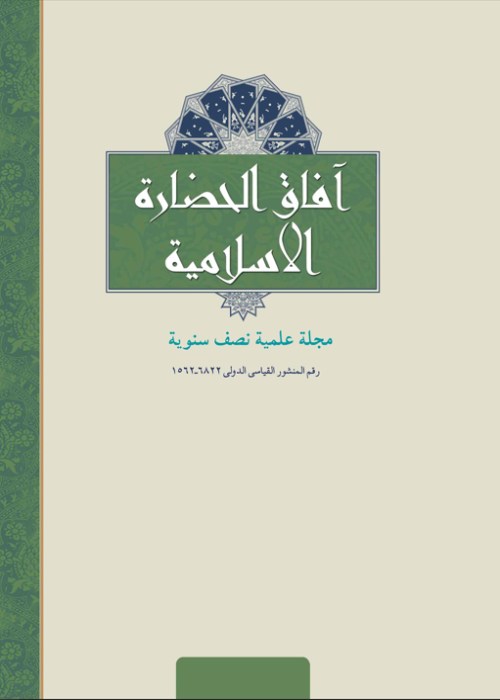Repetition and its aesthetics in , Surah of Al-Isra (An Analysis of Linguistic Studies of Text)
Repetition is an aesthetic literary phenomenon, and is an important element in the literary text. This phenomenon was cited among scientist as one of advantages of innovative science since old years ago and had great importance. Repetition goes beyond of being just an innovative technique of speech in linguistic science and because it is based on the principle of repetition and emphasizing on concepts, it plays a prominent role in linking the parts of the text and its cohesion, so that convert the text to a coherent general. Text scholars have been interested in repetition, as it is one of the means of casting the text and is intended to repeat two words in which the reference is the same. This continues with reference to the inside of the text, then the stability of the text is supported by this continuity because it contributes to linking the propositional content of sentences in different parts of the text. The constructor resorts to repeating a word, phrase, sentence, or paragraph, in order to achieve a semantic function that leads to the cohesion of the text. Repetition in its various patterns helps the recipient to remember the content of the text so that the basic idea of the text is rooted in his mind, that is, repetition creates a common basis between the sentences, which contributes to the cohesion of the text and making it an integrated unit. The repetition patterns among linguists are numerous, including: total repetition, partial repetition, synonym repetition, and sentence repetition. Our choice in the patterns of repetition fell on the patterns of Halliday and Ruqaiya Hassan: (Objective repetition, Synonymous, Semantic inclusion and public words). The total and partial repetition of verbs and nouns is what falls under the Objective repetition. According to this theory, the vision expands in repetition from the level of the sentence to the level of the text. The Holy Qur’an is the main source for weaving this method; because this is the best literary text. Existing of same part and Concomitant concepts in surah of Al-Isra, make necessary the methodological investigations according to linguistic schems of text in order to explain repetition role in coherence in a part of this surah and to explain amount of its interaction with main axis of this surah. The research aimed to reveal the patterns of repetition in this surah, and accordingly our study carried out the following: A combination of the views of ancient and contemporary linguists about "repetition". And the reference to the patterns of repetition in its two sides: rhetorical and coherent. And the choice of "slavery" as a central axis of surah of Al-Isra, served by sub-axes: (the true idol, the true slave, those who go astray from slavery). And analysis of the verses in the surah according to the three axes, by relying on the descriptive - analytical approach. So, The approach followed to clarify the research problem is the descriptive method in the theoretical section, while the application section is functional and analytical, focusing on the functional use of the method of repetition and its positions in surah of Al-Isra. During the investigation process, and with regard to Surah Al-Isra, the researcher did not find an independent study, dealing with the role of repetition and its patterns in the cohesion of Surah Al-Isra, then this study attempts to combine the rhetorical and textual aspect of the phenomenon of repetition, and focuses on the patterns of repetition among linguists (Hallidi and Ruqayya Hassan) and analyze them in The surah is according to the original axes in the surah, in a treatment that seems new. Results of this study: In surah of Al-Isra, repetition is considered an innovating improvement, as well as one of the mechanisms of cohesion, so relying on the descriptive-analytical approach of data analysis show that surah of Al-Isra, is divided to three main axes (the true idol, the true slave, those who go astray from slavery), all of them have a role in the cohesion of the surah. Among the types of repetition in the surah, the repetition of the lexical element played a major role in its consistency. Axis of true idol as main axis has attracted maximum elements of repetition. Among of all types of repetition in view of linguistics (Objective repetition, Synonymous, Semantic inclusion and public words), Objective repetition plays important role in cohesion of text.
- حق عضویت دریافتی صرف حمایت از نشریات عضو و نگهداری، تکمیل و توسعه مگیران میشود.
- پرداخت حق اشتراک و دانلود مقالات اجازه بازنشر آن در سایر رسانههای چاپی و دیجیتال را به کاربر نمیدهد.


